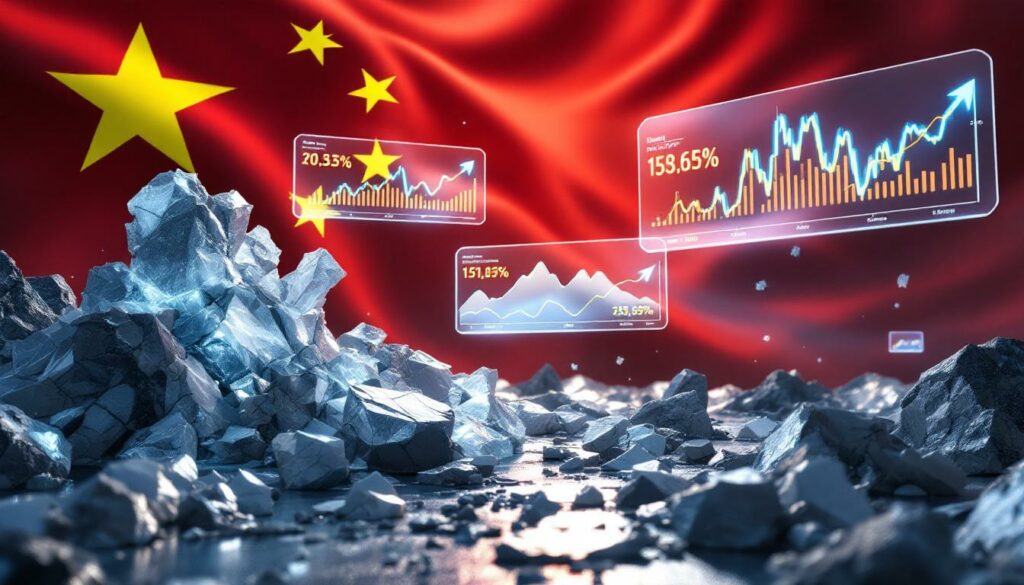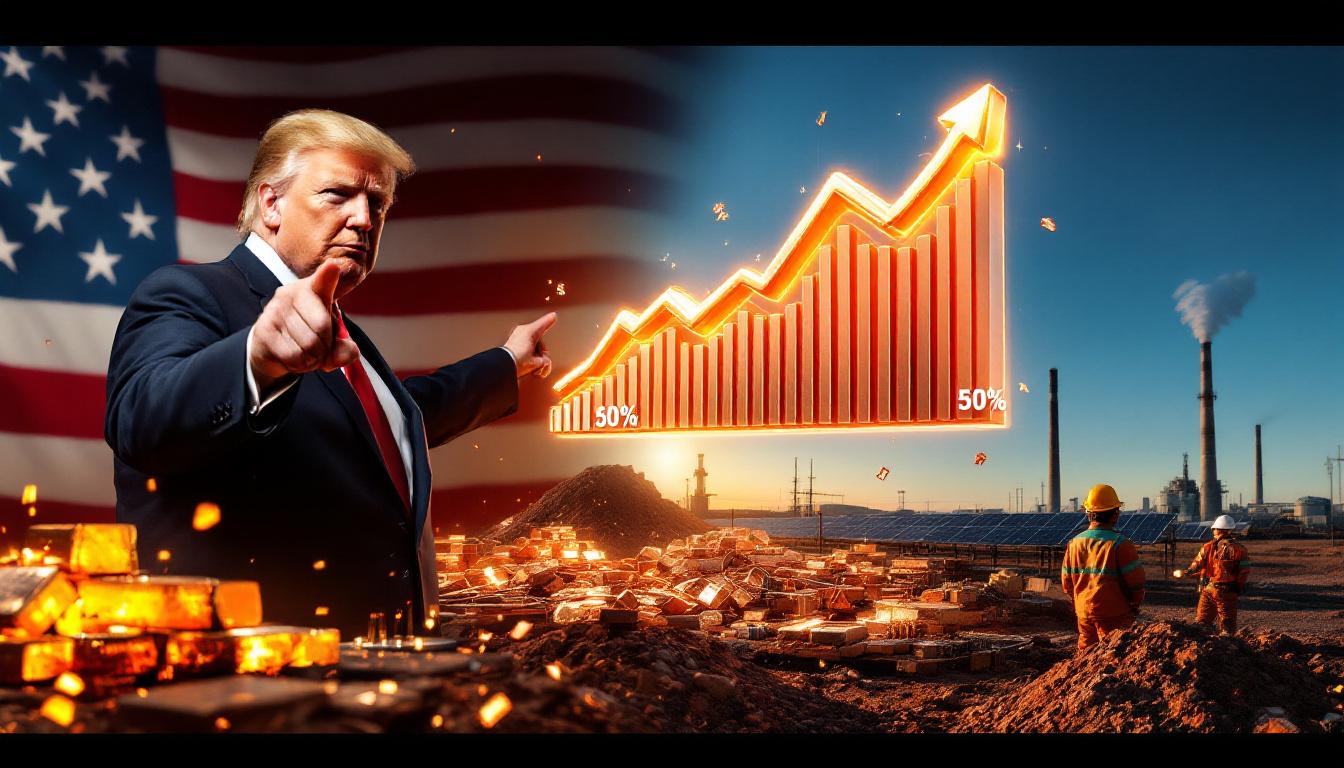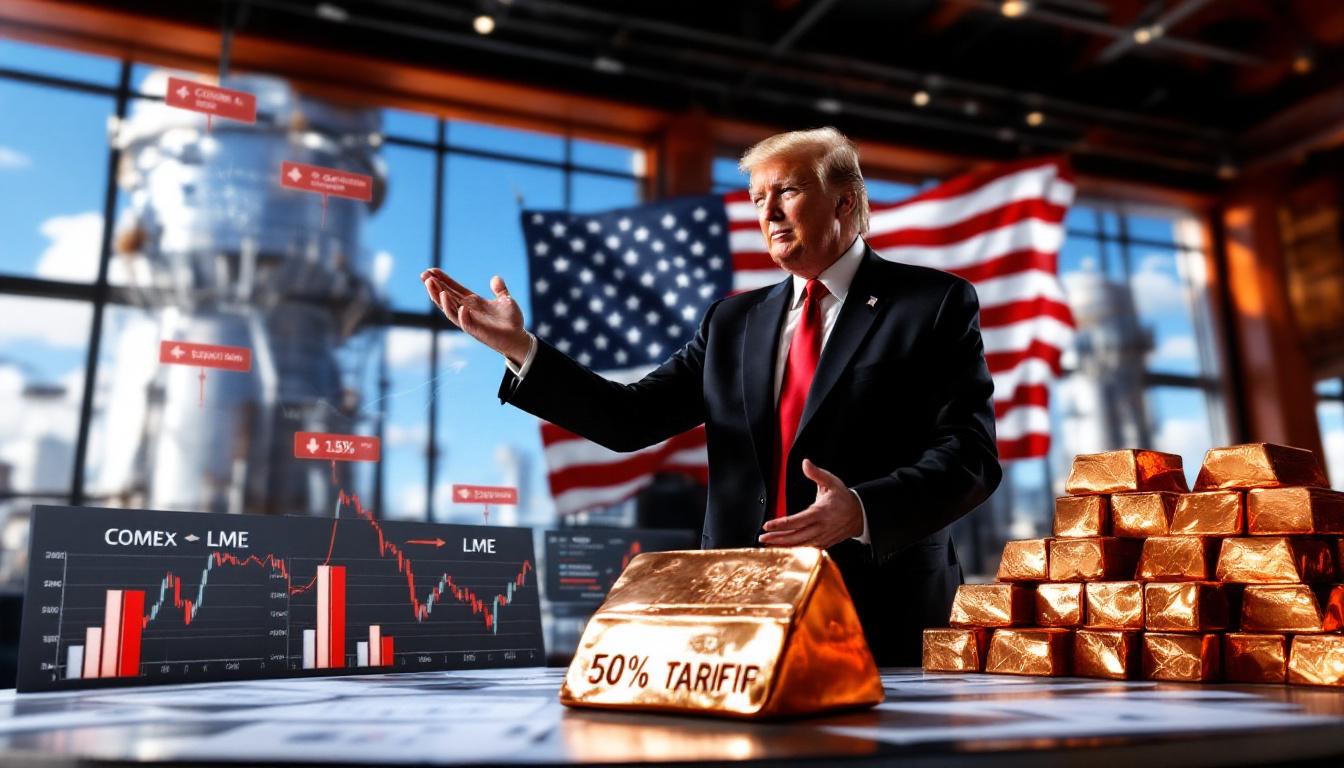What's Causing China's Lithium Giants to Stumble in 2025?
China's major lithium producers have issued alarming financial forecasts for the first half of 2025, triggering significant market reactions. Tianqi Lithium Corporation projected minimal net income of just ¥155 million ($21.6 million), while Ganfeng Lithium Group announced an expected net loss between ¥300-550 million. Most concerning was Chengxin Lithium Group's warning of potential losses reaching ¥850 million.
These announcements, released on July 14, sent immediate ripples through the market. Chengxin's stock dropped as much as 5.1% in Shenzhen trading, while Hong Kong-listed shares saw Ganfeng plummet 6.8% and Tianqi decline 3.3% during morning trading on July 15.
The Price Collapse Behind the Warnings
The primary factor driving these financial troubles is the continued deterioration of lithium prices. Despite already experiencing two consecutive years of losses, spot lithium carbonate prices in China fell by approximately 20% during the first half of 2025, further damaging producer profitability.
This dramatic price decline follows a 70% drop in 2024, according to Benchmark Mineral Intelligence's Q1 2025 report, creating a challenging environment where production costs frequently exceed market prices. Industry data from Fastmarkets reveals production costs averaged $15,500/tonne in Q2 2025, while spot prices hovered around $14,200/tonne—a classic cost-price inversion scenario.
"The fall in prices of lithium salt and lithium battery products hit operating earnings by a certain extent," Ganfeng Lithium stated in their disclosure to investors.
This price collapse has created several interlinked challenges for producers:
- Margin compression: Operating margins have compressed or disappeared entirely
- Inventory devaluation: High-cost inventory requires significant write-downs
- Cash flow constraints: Reduced operational cash generation threatens capital expenditure plans
Chengxin's ¥418 million inventory impairment perfectly illustrates the accounting mechanics behind these warnings. Using FIFO (first-in, first-out) accounting principles, the company has been forced to write down high-cost inventory purchased during the 2023 price peak—when lithium carbonate commanded nearly $70,000/tonne—that became stranded as prices collapsed.
How Did China's Lithium Market Reach This Crisis Point?
The current crisis stems from a fundamental supply-demand imbalance that has developed over several years. According to the International Energy Agency's 2025 reports, lithium supply grew at a staggering 175% CAGR between 2022-2024, dramatically outpacing the 55% demand growth during the same period.
The Supply-Demand Imbalance
Two fundamental factors have created the current market conditions:
-
Supply Glut: Rapid capacity expansion during the previous lithium boom created oversupply conditions that continue to plague the market
-
Disappointing EV Adoption: Electric vehicle sales growth has failed to meet the ambitious projections that drove investment in lithium production capacity
Daisy Jennings-Gray from Benchmark Mineral Intelligence explained the structural nature of the problem: "Disorderly expansion during 2022-23 boom created structural oversupply. EV adoption plateaued just as new mines commissioned."
BloombergNEF data shows global EV sales grew just 25% year-over-year in H1 2025, dramatically below the 65% growth projected in 2022 models—precisely when investment decisions for today's excess capacity were made.
Inventory Challenges and Asset Impairments
The financial statements reveal specific challenges facing producers:
- Chengxin Lithium reported an expected ¥418 million inventory impairment
- Ganfeng acknowledged writing down asset values, including inventories and lithium brine insights from Argentina where breakeven exceeds $18,000/tonne
- Tianqi noted progress in "digesting existing lithium concentrate inventory" as costs approach procurement prices
These inventory issues highlight how producers have been caught with high-cost materials as market prices collapsed. According to S&P Global Commodity Insights, China's lithium inventory levels reached approximately 34,000 tonnes in Q2 2025, creating a substantial overhang that continues to pressure prices.
The global lithium surplus has reached approximately 112,000 tonnes LCE (lithium carbonate equivalent) in 2025, according to Roskill's Q2 2025 update, creating conditions where accounting standards (IAS 2) require companies to write down inventories when net realizable value falls below carrying cost.
Is Recovery on the Horizon for China's Lithium Sector?
Despite the gloomy first-half performance, some positive indicators have emerged that suggest the possibility of stabilization in the lithium market.
Recent Price Stabilization Signs
The Asian Metal price index shows lithium carbonate prices increased by 8% week-over-week in early July 2025, providing a glimmer of hope for producers. Several factors may be contributing to this tentative recovery:
- Domestic lithium prices have shown modest recovery in recent weeks
- Beijing has pledged to regulate "disorderly" price competition in oversupplied sectors
- Tianqi expects improved investment income from its stake in SQM, projecting year-on-year performance increases
Chen Long of Plenum China Economics noted in a July 12 research report: "Beijing's pledge to regulate 'disorderly competition' signals potential production quotas. This could tighten supply by Q4."
This government intervention is already taking shape. According to industry sources, the Ministry of Industry and Information Technology (MIIT) has drafted rules proposing output caps for producers with cash costs below $13,000/tonne. More concretely, the Jiangxi provincial government issued a directive in July 2025 mandating 30-day production halts for 12 lithium converters.
Structural Changes Needed for Sustainable Recovery
Analysts point to several factors that will determine whether the lithium market can achieve long-term stability:
-
Production Discipline: Major producers may need to curtail output to balance the market
-
EV Market Acceleration: Sustainable recovery depends on electric vehicle adoption rates increasing
-
Government Intervention: China's regulatory approach to "disorderly competition" could provide price support
Industry experts suggest these government interventions could potentially reduce China's lithium output by 15-20% according to Deutsche Bank estimates, potentially bringing supply and demand back into balance by early 2026.
How Are Different Lithium Producers Positioned for the Future?
The varying severity of financial warnings provides insight into how different companies are weathering the storm, revealing significant disparities in their resilience to current market conditions.
Comparative Financial Outlook
| Company | H1 2025 Projection | Key Vulnerability | Strategic Position |
|---|---|---|---|
| Tianqi Lithium | Up to ¥155M net income | SQM income dependency (45% of EBIT) | Integrated operations with $11,200/tonne costs |
| Ganfeng Lithium | ¥300-550M net loss | Battery segment margins: -3.7% | Battery capacity expansion despite losses |
| Chengxin Lithium | Up to ¥850M net loss | Inventory impairment ratio: 49% | High cost producer (4th quartile) |
This table highlights how different cost structures and business models impact financial performance during the downturn. Tianqi's integrated operations (mine-to-converter) have helped maintain profitability, with production costs averaging $11,200/tonne—significantly below the industry average of $15,000/tonne.
Strategic Adaptations
Each company has highlighted different approaches to navigating the challenging market:
-
Tianqi: Focusing on inventory management and benefiting from diversification through its SQM stake, which is projected to deliver 40% year-over-year gains according to SQM's Q2 2025 guidance
-
Ganfeng: Emphasizing battery-grade lithium refinery capacity expansion and increased sales volume despite price pressures, with battery sales volume up 200% year-over-year though priced below cost
-
Chengxin: Facing the most severe challenges with significant inventory impairments and operating in the fourth quartile of the cost curve according to Macquarie research
Ganfeng's strategic pivot toward battery manufacturing—with UBS projecting capacity expansion to 60GWh by 2026—represents a vertical integration strategy that may provide more stability in the long term, despite current margin compression.
What Does This Mean for Global Lithium Markets?
China's lithium industry struggles have global significance that extends far beyond its domestic market, with implications for the entire electric vehicle supply chain worldwide.
International Market Implications
China represents approximately 65% of global lithium hydroxide processing capacity and 58% of lithium carbonate production according to the US Geological Survey's 2025 Mineral Report, making its market conditions central to global pricing.
Western producers and projects face similar economic challenges despite different market structures, with at least 15 major mining projects deferred in 2025, including Savannah Resources' Mozambique operation and the anticipated Thacker Pass update in Nevada. This pullback in investment threatens long-term supply adequacy.
Simon Moores, CEO of Benchmark Mineral Intelligence, warned in a July 5 webinar: "Today's low prices are sowing seeds of tomorrow's deficit. Greenfield financing has frozen."
The Paradox of Current Market Conditions
The lithium industry faces a unique contradiction that complicates both investment decisions and policy responses:
- Long-term demand projections remain robust as transportation electrification continues
- Current oversupply has created unsustainable pricing for many producers
- Investment in future capacity may be deterred by current market conditions, potentially creating future supply constraints
This contradiction creates what Rystad Energy models identify as a pricing paradox: current $14,200/tonne prices sit below 60% of producers' cash costs, potentially leading to a 500,000-tonne supply gap by 2028 if investment continues to stall.
The US Department of Energy's lithium stockpiling program and the recent Livent-Albemarle merger further demonstrate how non-Chinese players are responding to these market conditions with consolidation and strategic reserves.
How Should Investors Interpret These Warnings?
Investors analyzing the lithium sector should look beyond the headline numbers to understand the structural factors that will determine which companies survive the downturn and thrive in the recovery.
Key Metrics to Monitor
Investors should focus on several critical indicators when evaluating lithium producers:
-
Inventory Levels: Industry average inventory-to-sales ratios have reached 2.3 months versus 1.1 months in 2022 according to S&P Global data, suggesting continued price pressure
-
Production Costs: Companies with lower production costs will weather the downturn better, with Tianqi operating in the first quartile of the cost curve while Chengxin sits in the fourth quartile per Macquarie research
-
Diversification: Producers with exposure to multiple parts of the battery supply chain may have more stability
-
Financial Stability: Debt covenants are becoming problematic, with Chengxin's 1.8x debt/EBITDA ratio breaching loan terms according to a Fitch alert
By contrast, global peers like SQM are projecting H1 2025 EBIT margins of 28%, highlighting the advantage of low-cost operations in the current environment.
Upcoming Catalysts
Several developments may influence the sector's trajectory in the coming months:
- Full financial reports expected in August 2025 will provide more detailed insights into company-specific challenges
- Government policy announcements regarding "disorderly competition" could set production quotas
- MIIT regulatory thresholds for market intervention are expected to be published by September
- Electric vehicle sales data in major markets like China, Europe, and North America will determine demand recovery
Investors should also monitor the Ministry of Industry and Information Technology's upcoming five-year plan implementation details, which could provide further clarity on government priorities for the sector.
What's Next for China's Lithium Industry?
The immediate future presents continued challenges for China's lithium producers, but also opportunities for strategic repositioning and consolidation.
Short-Term Outlook
The immediate future presents several ongoing challenges:
- Further financial strain likely in the second half of 2025 as inventory issues persist
- Potential consolidation as weaker players struggle to maintain operations
- Continued inventory management challenges with global stockpiles remaining elevated
The MIIT five-year plan projects 30% fewer lithium producers by 2027, suggesting significant consolidation is anticipated by Chinese authorities. According to Caixin reports, a state-backed consolidation fund of approximately $7 billion has been established to facilitate this process.
Long-Term Industry Transformation
Beyond the current crisis, several structural changes are likely to reshape China's lithium industry:
- More disciplined capacity expansion aligned with actual EV demand growth
- Greater integration between mining and battery manufacturing, with Bernstein analysis showing 80% of top 10 firms now control battery plants
- Increased focus on production costs and operational efficiency through lithium industry innovations and geothermal lithium extraction methods
Technological solutions like Direct Lithium Extraction (DLE) could reduce production costs by up to 30% by 2027 according to Adamas Intelligence, with Ganfeng's DLE pilot in Qinghai province representing a potential breakthrough for the industry.
Disclaimer: The lithium market is subject to significant volatility, and future performance depends on numerous factors including government policy, electric vehicle adoption rates, and technological developments. Investors should conduct thorough due diligence before making investment decisions based on industry projections.
FAQ: China's Lithium Market Crisis
Why are lithium prices so low despite growing EV adoption?
Lithium production capacity expanded faster than electric vehicle demand, creating a supply glut. While EV adoption continues to grow (25% year-over-year in H1 2025), it has fallen significantly short of the 65% growth projections that drove capacity investments in 2022-2023. Additionally, technological improvements in battery chemistry have reduced the amount of lithium required per battery in some applications.
Will lithium prices recover in the second half of 2025?
Recent price stabilization suggests modest improvement is possible, especially with China's pledge to regulate "disorderly" competition. The 8% week-over-week price increase in early July provides some encouragement, but significant recovery would require either production cuts through government intervention or accelerated demand growth from the EV sector.
How do these financial warnings compare to previous lithium market downturns?
The current downturn is more severe than previous cycles because it follows massive capacity expansion during the 2021-2022 lithium price boom when prices reached nearly $70,000/tonne. Previous downturns typically occurred before such significant investment in new production, making the current situation particularly challenging for producers with high fixed costs.
What impact will this have on global EV manufacturing?
Lower lithium prices benefit EV manufacturers by reducing battery costs, potentially accelerating EV adoption through improved affordability. However, sustained unprofitable conditions for lithium producers could eventually lead to underinvestment and future supply constraints by 2028, potentially creating price volatility that could disrupt EV production schedules and pricing.
Ready to Get Ahead of the Next Major Mineral Discovery?
Discovery Alert's proprietary Discovery IQ model delivers real-time alerts on significant ASX mineral discoveries, including lithium and other critical minerals, turning complex data into actionable investment insights. Understand why historic discoveries can generate substantial returns by visiting Discovery Alert's dedicated discoveries page and begin your 30-day free trial today.




